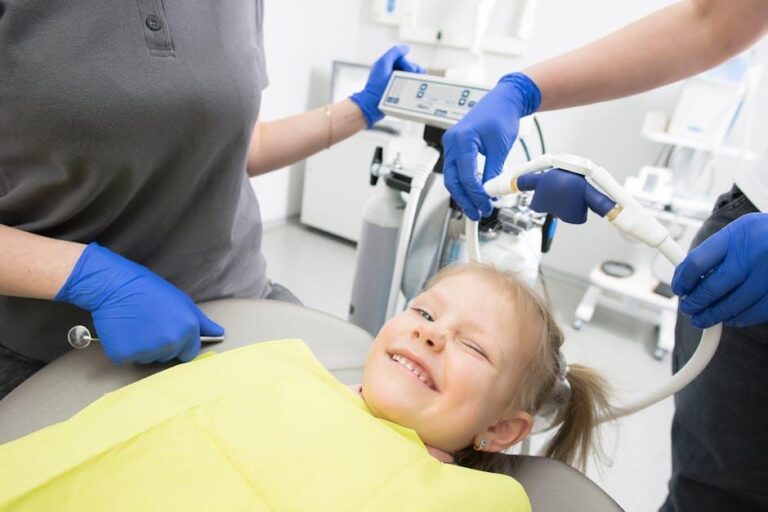1 in 3 Kids Has Dental Problems, Poll Finds – U.S. News & World Report
Recent findings by U.S. News & World Report highlight a concerning trend: 1 in 3 children in the United States currently suffers from some form of dental problem. This alarming statistic underscores the importance of pediatric oral health and the urgent need for parents, caregivers, and healthcare practitioners to address children’s dental care proactively.
The Scope of Children’s Dental Problems in the U.S.
The poll reveals that dental issues such as cavities, gum disease, and tooth decay are prevalent among young children. These conditions not only affect their smiles but also impact overall health, growth, and development. Understanding the scope and root causes is vital to mitigating the problem.
Key Dental Problems Faced by Children
- Dental cavities (tooth decay): The most common chronic childhood disease.
- Gum inflammation (gingivitis): Often caused by poor oral hygiene.
- Malocclusion: Problems with teeth alignment or bite.
- Early childhood caries: Severe cavities in babies and toddlers.
Why Are Dental Problems So Common in Kids?
Several factors contribute to the high incidence of dental problems in children:
- Poor oral hygiene habits: Many children do not brush or floss effectively.
- Sugar-rich diets: High consumption of sweets, sugary drinks, and snacks fuels tooth decay.
- Limited access to dental care: Socioeconomic factors can delay diagnosis and treatment.
- Lack of parental awareness: Some caregivers underestimate the importance of infant and toddler dental health.
Impact of Dental Problems on Kids’ Overall Health
Dental health is deeply intertwined with a child’s overall well-being. Untreated dental issues can lead to:
- Chronic pain and discomfort affecting eating and sleeping
- Difficulty concentrating at school due to pain or embarrassment
- Speech development problems
- Increased risk for infections that can spread beyond the mouth
- Emotional and social challenges stemming from poor self-esteem
Practical Tips for Parents to Prevent and Manage Dental Problems in Children
Parents play a crucial role in preserving their children’s oral health. Here are actionable tips to reduce the risk of dental problems:
- Start Early: Begin cleaning your child’s gums even before teeth emerge. Start brushing as soon as teeth appear.
- Regular Dental Visits: Schedule your child’s first dental visit by their first birthday and maintain regular check-ups.
- Establish Good Hygiene Routines: Teach kids to brush twice daily with fluoride toothpaste and floss regularly.
- Limit Sugary Foods and Drinks: Reduce sugary snacks and offer healthier alternatives like fruits and vegetables.
- Lead by Example: Show good dental hygiene habits yourself to encourage your child to follow suit.
- Use Dental Sealants: Ask your dentist about protective sealants to shield molars from decay.
Recommended Dental Care Schedule for Kids
| Age Group | Dental Check-up Frequency | Key Focus |
|---|---|---|
| 0-1 year | At first tooth eruption and by 1 year | Oral hygiene introduction, risk assessment |
| 1-3 years | Every 6 months | Early cavity prevention, dietary advice |
| 4-12 years | Every 6 months | Check bite alignment, sealants, and fluoride treatment |
| 13+ years | Every 6 months | Orthodontic assessments, sensitive teeth management |
Case Study: How Early Intervention Changed Sarah’s Oral Health
Sarah, a 5-year-old girl featured in the U.S. News report, suffered from frequent dental cavities by age 3. Her parents lacked awareness about the importance of early dental visits. After receiving educational support and regular professional cleanings, combined with improved home care and dietary adjustments, Sarah’s dental problems significantly diminished within a year.
Lessons from Sarah’s Experience
- Early dental visits can identify problems before they worsen.
- Consistency in oral care routines is critical.
- Parental knowledge and involvement strongly influence outcomes.
Benefits of Prioritizing Children’s Dental Health
Investing time and effort into your child’s dental care yields long-term benefits:
- Strong, healthy teeth: Foundation for a confident smile and proper chewing.
- Reduced healthcare costs: Prevention decreases the need for expensive treatments.
- Improved overall health: Good oral hygiene supports general health and immune function.
- Enhanced self-esteem: Healthy smiles boost social interactions and confidence.
Conclusion
The recent finding that 1 in 3 kids has dental problems in the U.S. serves as a wake-up call for parents and communities. Dental problems in childhood can have far-reaching effects if left untreated, but the good news is that many issues are preventable with the right knowledge, habits, and professional care. By fostering strong oral hygiene routines early, ensuring regular dental visits, and promoting healthy diets, parents can help their children enjoy a lifetime of healthy smiles.
Stay informed, take proactive steps, and partner with pediatric dental experts to tackle this widespread issue head-on. Your child’s bright smile starts today!
For more resources on children’s oral health and pediatric dentistry, visit U.S. News & World Report – Children’s Dental Health.


